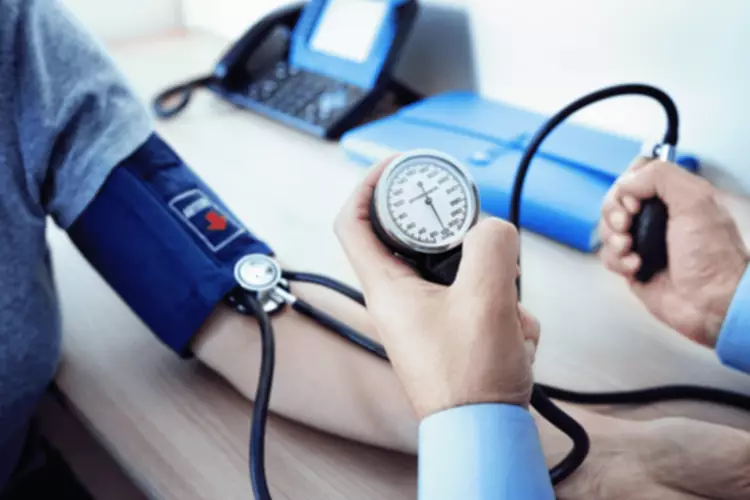Alcoholic Cardiomyopathy: Causes, Symptoms, and Diagnosis

Some studies have suggested that a genetic vulnerability exists to the myocardial effects of alcohol consumption. Individuals with certain mitochondrial deoxyribonucleic acid (DNA) mutations and angiotensin-converting enzyme (ACE) genotypes (DD genotype) may be particularly susceptible to the damaging effects of alcohol. Alcohol-induced cardiomyopathy is a condition where your heart changes shape because of long-term heavy alcohol use. The changes to your heart’s shape cause long-term damage, leading to heart failure and severe problems. Abstaining from alcohol may help some people recover, but others will need medication or even surgery. The preponderance of data suggests that drinking one to two drinks in men and one drink in women will benefit the cardiovascular system over time.

History and Physical
The EMSA band shifts with nuclear extracts of cardiac tissue confirmed the presence of Abl1 in competition assays with gene specific oligonucleotide probes whereas the use of mutated probes demonstrates specificity (Fig. 7A). To obtain genomic Abl1, we extracted total RNA from the human MCF7 breast cancer and the HCT116 colon cancer cell line using standard protocols (RNeasy mini, Qiagen). We initiated cDNA synthesis from 1 µg of RNA with the First Strand DNA synthesis kit and random decamers (ABgene, Resnova, Milan, Italy). To facilitate the amplification reaction, the 3,394 nt Abl1 cDNA was amplified as two separate fragments (N-ter and C-ter) with an overlap of ∼ 700 nt.
Clinical work-up for alcoholic cardiomyopathy
Markers for chronic alcohol consumption rely on liver enzymes such as gamma-glutamyltransferase (GGT) [119], glutamic oxalacetic transaminase (GOT), and glutamic pyruvic transaminase (GPT). Elevations of the transaminases (GOT, GPT), especially a ratio of GOT/GPT higher than 2 might be indicative of alcoholic liver disease instead of liver disease from other etiologies [120, 121]. https://ecosoberhouse.com/ An excellent marker is carbohydrate deficient transferrin (CDT), which best detects chronic alcohol consumption alone [122, 123] or in combination with the other markers such as GGT [8, 124]. Markers such as ethyl sulphate, phosphatidyl ethanol, and fatty acid ethyl esters are not routinely done. For a comprehensive overview see Table 2 with combined data from [6, 8, 24, 28].
6. The Effect of Low-dose Ethanol on ACM

“Profile 1” was created by comparing sequences up- and downstream of putative Abl1 binding sites (+/- 100 bp) of doxorubicin-regulated genes (“positive” data set, 18 genes) with binding sites of non-regulated genes (“false-positive” data set, 25 genes). A summary of some of the potential cellular changes related to ethanol consumption are shown in Figure 1. There may be more than one cellular event happening and similar to other chronic health conditions, mechanisms maybe synergistic and inter-related. Summary of studies using pharmacologic inhibition or genetic manipulation to suppress ethanol-induced changes in cardiac structure and function.
- Although the role of Ifit3 in cardiac biology is uncertain, very recently, it was reported that downregulation of Ifit3 relieved the inflammatory response and myocardial fibrosis of mice with myocardial infarction and improved their cardiac function [173].
- This review assembles and selects pertinent literature on the ambivalent relationship of ethanol and the cardiovascular system, including guidelines, meta-analyses, Cochrane reviews, original contributions, and data from the Marburg Cardiomyopathy registry.
- Growth factors and cardiomyokines are relevant molecules that may modify this process.
- We reviewed the effects of ethanol on the cardiovascular system in 1996 [15], including aspects of inflammation [16], rhythm disturbances [17], and hypertension [18].
Ethanol-induced disruption of ribosomal protein synthesis also contributes to non-contractile protein depletion [104]. Several aspects of mitochondrial function, including respiratory complex activities and mitochondrial-dependent oxidative damage and apoptosis, are also induced by ethanol [26,100]. Myocyte cytoskeletal structure [21], connexin channel communication, and desmosomal contacts are affected by ethanol, causing structural cell instability [105]. Ethanol may induce changes in nuclear regulation of transcription with a dose-dependent translocation of NFkB into the nucleus [106].
Coronary artery disease and atherosclerosis
Certain microscopic features may suggest damage secondary to alcohol causing cardiomyopathy. Commonly seen cellular structural alterations include changes in the mitochondrial reticulum, cluster formation of mitochondria alcoholic cardiomyopathy and disappearance of inter-mitochondrial junctions. It’s important to be honest with your doctor about the extent of your alcohol use, including the number and amount of drinks you have each day.

Actual causes of death in the united states, 2000
- On physical examination, patients present with non-specific signs of congestive heart failure such as anorexia, generalized cachexia, muscular atrophy, weakness, peripheral edema, third spacing, hepatomegaly, and jugular venous distention.
- Despite this clear epidemiological evidence of ethanol’s unsafe consumption and increased health risk, results of consumption policies are not effective enough.
- Using standard protocols, we examined the ultrastructure of cardiomyocytes and mitochondria of control and doxorubicin-treated animals by transmission electron microscopy (TEM).
- Therefore, any decrease in the previous quantity of alcohol consumption may improve, to some degree, cardiac health [51].
Positional weight matrix (PWM) for Abl1 and p53
